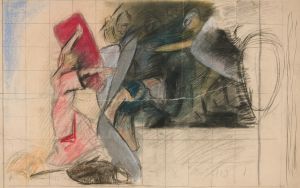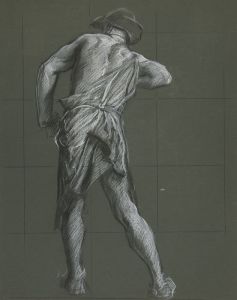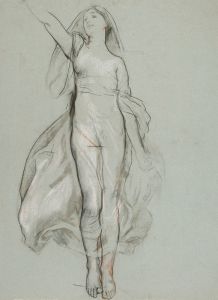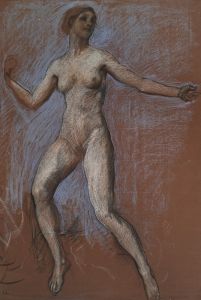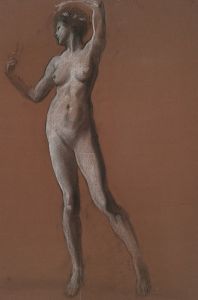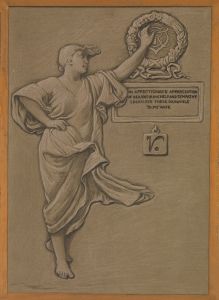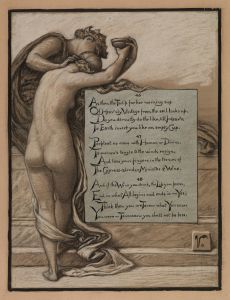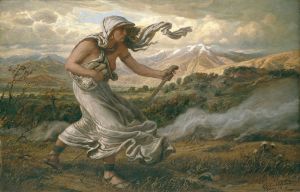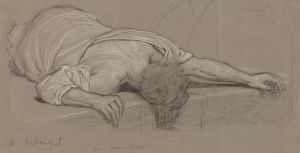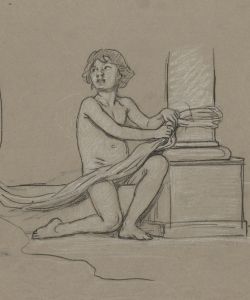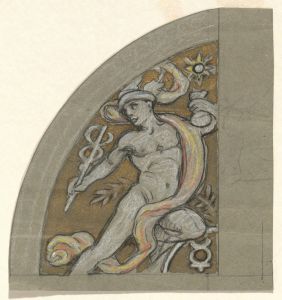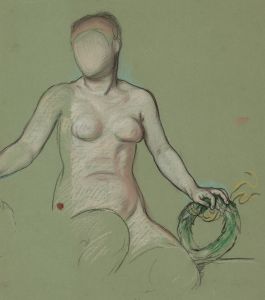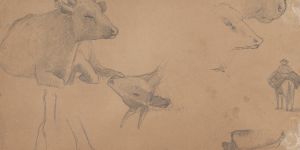
Study of the figure of Peace in Peace and prosperity
A hand-painted replica of Elihu Vedder’s masterpiece Study of the figure of Peace in Peace and prosperity, meticulously crafted by professional artists to capture the true essence of the original. Each piece is created with museum-quality canvas and rare mineral pigments, carefully painted by experienced artists with delicate brushstrokes and rich, layered colors to perfectly recreate the texture of the original artwork. Unlike machine-printed reproductions, this hand-painted version brings the painting to life, infused with the artist’s emotions and skill in every stroke. Whether for personal collection or home decoration, it instantly elevates the artistic atmosphere of any space.
Elihu Vedder was an American symbolist painter, known for his allegorical and mystical works. One of his notable pieces is "Peace and Prosperity," which features a detailed study of the figure of Peace. This painting is a part of Vedder's broader exploration of symbolic themes, often reflecting his interest in the human condition and philosophical concepts.
"Peace and Prosperity" is a mural that Vedder created for the Library of Congress in Washington, D.C. The mural was part of a larger commission to decorate the newly constructed Thomas Jefferson Building, which opened in 1897. Vedder was among several artists selected to contribute to the building's elaborate and symbolically rich interior. His work, including "Peace and Prosperity," is located in the Southwest Pavilion, which is also known as the Pavilion of the Elements.
The figure of Peace in Vedder's mural is depicted as a serene and harmonious presence, embodying the ideal of peace as a stabilizing and nurturing force. The figure is often portrayed with traditional symbols associated with peace, such as olive branches or doves, though specific details of these symbols in Vedder's work should be verified by viewing the mural itself. The composition and iconography are typical of Vedder's style, which often includes classical influences and a strong emphasis on allegory.
Vedder's work for the Library of Congress reflects the broader cultural and artistic movements of the late 19th century, particularly the American Renaissance, which sought to express national ideals through classical and allegorical art. His murals, including "Peace and Prosperity," were intended to inspire and educate the public, aligning with the mission of the Library as a repository of knowledge and culture.
The creation of the murals involved significant collaboration and planning, as Vedder worked alongside architects and other artists to ensure that his work complemented the overall aesthetic and thematic goals of the Library. The murals were painted on canvas and then installed in the building, a common practice for large-scale works of this period.
Elihu Vedder's contribution to the Library of Congress, particularly through "Peace and Prosperity," remains an important example of his artistic legacy. His ability to convey complex themes through allegory and symbolism has left a lasting impact on American art. The murals continue to be appreciated by visitors to the Library, offering insight into the cultural values and artistic aspirations of the time.
Overall, Vedder's "Peace and Prosperity" serves as a testament to the enduring power of art to convey profound ideas and inspire reflection. Through his depiction of the figure of Peace, Vedder invites viewers to contemplate the ideals of harmony and prosperity, themes that remain relevant in any era.





